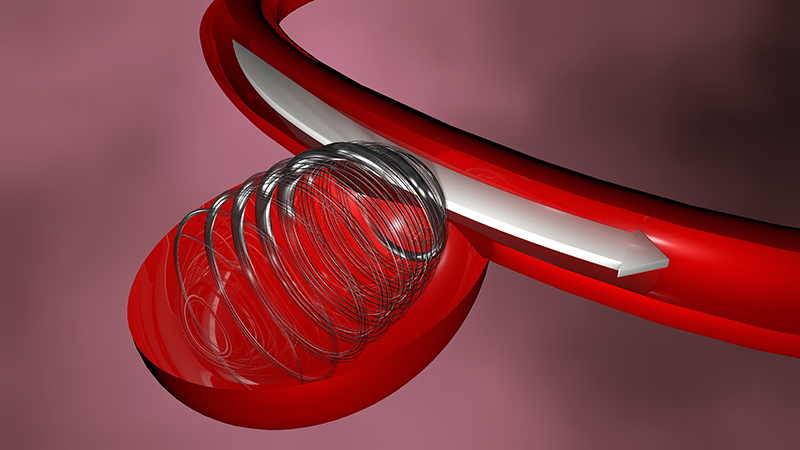
Endovascular treatment
Dr Duncan Anderson offers endovascular treatments to eligible patients. Endovascular treatments are highly technical. They comprise of non-surgical procedures that are minimally invasive. These procedures are performed inside the blood vessels and can be used as an alternative treatment option to open surgery. For example: in the event of a stroke, there is a sudden loss of brain function due to plaque or blood clots, restricting the oxygen rich blood flow to the brain. With endovascular treatments guidewires and microcatheters are used to restore blood flow. These microcatheters are inserted through incisions in the groin or arm. Microcatheters are thin tubes that, after insertion, are made visible with digital X-rays. Once the catheter reaches the treatment site, a contrast material is injected through the tube and images of the blood vessels are captured by the X-rays. This process identifies what and where the problem is so that the appropriate action can be taken and the procedure can commence.
The blood clot is then removed - this procedure is called a thrombectomy. If removal is not an option, the blood clot is liquified using drugs – this is called a thrombolysis. If the blood vessel is too narrow, a balloon catheter can be introduced and inflated or expanded. This will restore the blood vessel to its original size. This procedure is called an angioplasty. Afterwards, a small tube called a stent is inserted to hold the blood vessel open. Ideally, blood flow and brain function are then restored.
Endovascular treatment is a preferred method for treating health complaints that are vascular in nature as it is less invasive - catering to the intricate structures of the blood vessels, it lowers the risk of complications. The advantages of endovascular treatments for patients include: shorter recovery periods, local or regional anaesthesia can be used instead of the higher risk general anaesthesia, smaller incisions are made, there is less discomfort, less stress on the heart and fewer risks for patients with other medical conditions. Procedures like these may benefit patients who require surgical intervention but could not previously be treated due to the high-risk of complications because of their other conditions. Costs can be lower, and the risk of infection can possibly be lessened, however it does depend on the specific diagnosis and subsequent recommended endovascular treatment.
Endovascular treatment is used to treat vascular diseases as well. Patients who would seek, or may be prescribed an endovascular treatment or surgical intervention are patients who have blockages in their veins or arteries, and are experiencing pain and/or organ damage. These can include those who have suffered from peripheral arterial disease (PAD), a stroke, an aneurysm, ulcerations or even poorly controlled hypertension.
